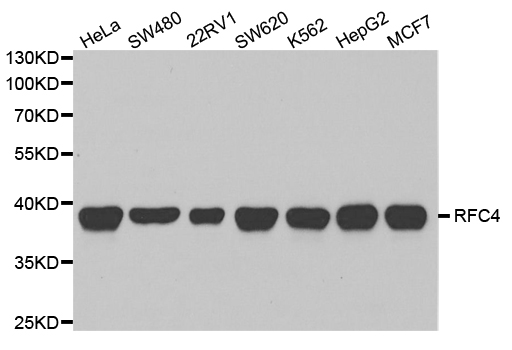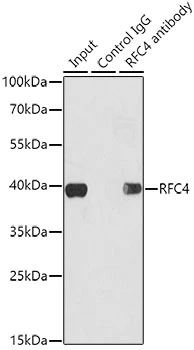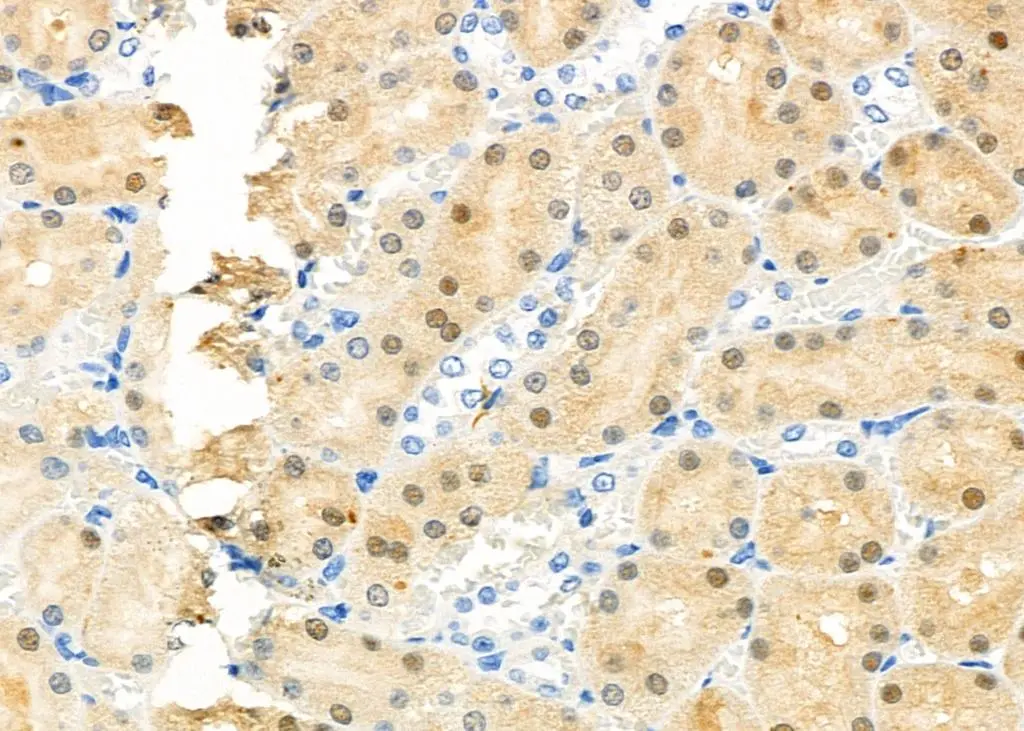RFC4 antibody [N1C3]
GTX104052
ApplicationsImmunoFluorescence, Western Blot, ImmunoCytoChemistry, ImmunoHistoChemistry, ImmunoHistoChemistry Paraffin
Product group Antibodies
TargetRFC4
Overview
- SupplierGeneTex
- Product NameRFC4 antibody [N1C3]
- Delivery Days Customer9
- Application Supplier NoteWB: 1:500-1:3000. ICC/IF: 1:100-1:1000. IHC-P: 1:100-1:1000. *Optimal dilutions/concentrations should be determined by the researcher.Not tested in other applications.
- ApplicationsImmunoFluorescence, Western Blot, ImmunoCytoChemistry, ImmunoHistoChemistry, ImmunoHistoChemistry Paraffin
- CertificationResearch Use Only
- ClonalityPolyclonal
- Concentration0.62 mg/ml
- ConjugateUnconjugated
- Gene ID5984
- Target nameRFC4
- Target descriptionreplication factor C subunit 4
- Target synonymsA1, MRMNS, RFC37, replication factor C subunit 4, A1 37 kDa subunit, RF-C 37 kDa subunit, RFC 37 kDa subunit, activator 1 37 kDa subunit, activator 1 subunit 4, replication factor C (activator 1) 4, 37kDa, replication factor C 37 kDa subunit
- HostRabbit
- IsotypeIgG
- Protein IDP35249
- Protein NameReplication factor C subunit 4
- Scientific DescriptionThe elongation of primed DNA templates by DNA polymerase delta and DNA polymerase epsilon requires the accessory proteins proliferating cell nuclear antigen (PCNA) and replication factor C (RFC). RFC, also named activator 1, is a protein complex consisting of five distinct subunits of 140, 40, 38, 37, and 36 kD. This gene encodes the 37 kD subunit. This subunit forms a core complex with the 36 and 40 kDa subunits. The core complex possesses DNA-dependent ATPase activity, which was found to be stimulated by PCNA in an in vitro system. Alternatively spliced transcript variants encoding the same protein have been reported. [provided by RefSeq]
- Storage Instruction-20°C or -80°C,2°C to 8°C
- UNSPSC12352203
References
- Chen BR, Quinet A, Byrum AK, et al. XLF and H2AX function in series to promote replication fork stability. J Cell Biol. 2019,218(7):2113-2123. doi: 10.1083/jcb.201808134Read this paper
- Lopez-Contreras AJ, Ruppen I, Nieto-Soler M, et al. A proteomic characterization of factors enriched at nascent DNA molecules. Cell Rep. 2013,3(4):1105-16. doi: 10.1016/j.celrep.2013.03.009Read this paper





